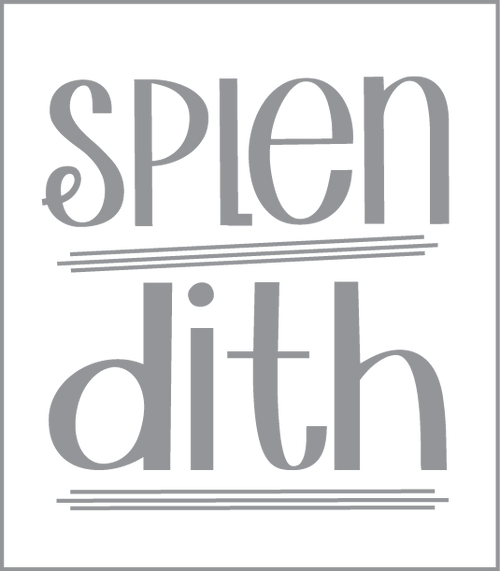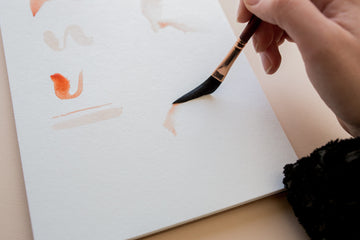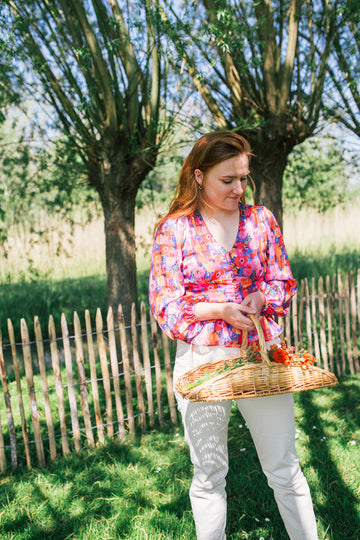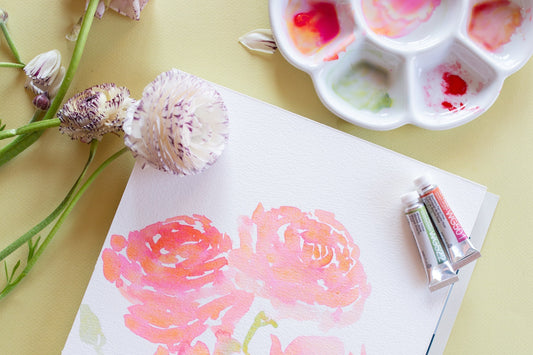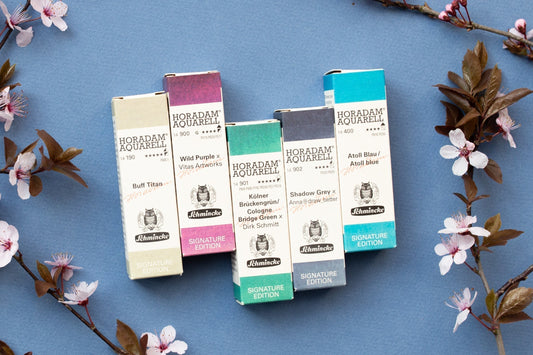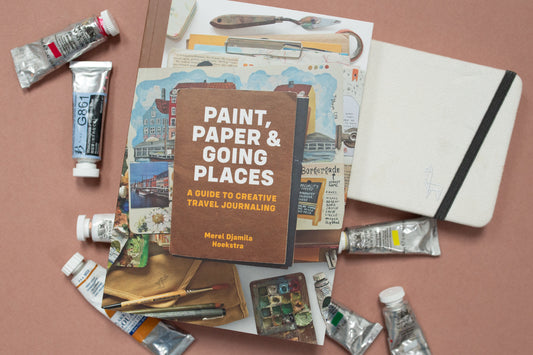What are good brushes? I am often asked which brushes are suitable for which material and what the difference is between brushes. So it's time to write a good and comprehensive blog for that. Sit back and relax, because this will be an extensive blog. For a concise summary: take a look at the product texts of the Princeton brushes. Here you can read all about the different hairs and shapes of the brushes from the shop.
And now the table of contents for this blog:
- How is a brush made?
- What types of brushes are there?
- For which material do you use which brush?
- What about the different shapes of brushes?
- What should you pay attention to when purchasing a brush?
- Princeton brushes
- How do you clean your brushes?
- FAQ
Let's go!

How is a brush made?
Before I explain all the individual parts of a brush, I thought it would be useful to start with the basics. That way you know what I'm talking about if you suddenly hear jargon. On the illustration you can easily see what everything is called.
A brush therefore consists of a handle, a bush and the brush (the bristles). You might think that the hairs are first clamped into the bushing, and then they are cut into a round shape? So it goes the other way around. The hair is first placed in the right shape and then cut straight at the bottom or made to fit the bush. They are then clamped into the bushing which is placed on the stem. This is how high-quality brushes are made.
'Laying hair' is a profession in itself, this is a craft that is widely practiced in an area in Germany. The materials used for this vary widely. The handle is usually made of wood and very occasionally of plastic. The length of the stem is determined in a practical way. Watercolor brushes are usually used for small work. To be able to sit close to the work, it is useful if the handle is not too long. If you work larger, for example on a canvas, it is nice if you have a longer handle to work with, because you are further away from the work. The biggest difference in brushes is in the bristles, which largely determines which material you can use a brush for.
For which material do you use which brush?
You can divide the brushes into different categories, I stick to two. Watercolor brushes are very specific, while Mixed media brushes can be used for more different materials.
Watercolor brushes
Watercolor brush
A watercolor brush is, perhaps obvious, suitable for watercolor painting. The bristles of these brushes are usually suitable for holding a lot of water/paint and maintaining a good point. The bristles of a brush must retain a good shape and be able to fan out flexibly, with the water flowing out of the brush in a controlled manner.
It is therefore important that the hair does not become too soft and that you keep a good shape. You don't want your brush to fan across your paper like a mop. Maintaining control is important with a watercolor brush.
There are many different variations in the flexibility of brushes. This is best explained using natural hair. Synthetic brushes usually refer to the natural bristles for their properties. The most commonly used bristles for Watercolor brushes are:
Kolinsky sable
These are the most expensive brushes available. The hair comes from the marten that lives in Siberia. Only the tail of a marten is used for the brushes. These brushes are known for maintaining a reliable and fine point.
The synthetic replacement for these brushes are the Princeton Heritage 4050 brushes .
Red sable
These hairs come from weasels. The bristles are resilient and absorb a lot of water. This is the slightly cheaper alternative to the Kolinsky brushes.
Squirrel hair
Squirrel hair is the softest type of hair used for brushes. The hairs are thin and very fine and can absorb a lot of water due to their structure. The bristles are a lot less elastic, so the tip retains less of the same shape. Because the bristles are so soft, you have to treat the brush with extra love. For example, you should never press too hard against the bushing, because the hairs will then break off quickly.
The synthetic replacement for squirrel hair is the Neptune series. The additional advantage of the synthetic replacement is that the hairs have the same structure as squirrel hair, but they break off much less quickly.
Is a watercolor brush also for gouache?
It is confusing whether you can use a watercolor brush with gouache. A watercolor brush is not suitable when using heavy types of paint. Gouache is a watercolor, but works differently than a watercolor paint. With gouache you usually use many more pigments, which are heavier and stiffer than watercolor paint. Do you often dilute gouache with water? Then you can sometimes use watercolor brushes for gouache.
Mixed Media brushes
Mixed media brushes: this includes Acrylic, Oil and watercolor. Many different types of bristles are used for types of media other than watercolor paint. Consider, for example, pig or cattle bristles. These types of bristles are a lot stiffer and are therefore more suitable for firm types of paint.
Synthetic replacements for mixed media brushes are the Select range (student quality) and the Velvet touch range (Artist range).
What should you pay attention to when purchasing a brush?
It is impossible to tell from the appearance of a brush whether it is a good quality brush. Unfortunately, you often only notice this when you are using a brush, so you really have to try it out to see whether you like the brush itself. It will be very expensive to test all kinds of brushes. That is why there are two important tips that will help you when purchasing a brush.
Choose quality over quantity
Brushes can be a pricey investment for you. You are more likely to go for the pack with multiple brushes than for one good brush. While you might buy a multipack at the Flying Tiger for €5, you pay the same for one high-quality brush. With that multipack you often can't do what you want with your brush and they also lose their hair quickly. Therefore, it is better to choose a good brush, which you can use for everything and actually does what you want. You want to be able to control your brush, right?
Synthetic or animal hair?
I only sell synthetic brushes. Modern techniques have made such good synthetic hair available that I prefer to use it over animal hair.
Being able to imitate the good properties of real hair in synthetic hair. The hairs have the same structure as real hairs, but they have been improved and do not break easily, for example. Furthermore, synthetic brushes require less maintenance and can withstand chemical cleaning better. If you use acrylic paint, this can be very useful.
It is always best to use synthetic brushes for acrylic paint. The ingredients of the paint can damage the natural hair. You won't have any problems with synthetic hair, provided you keep them clean of course!

How do you clean a brush properly?
If you bought a good brush, you naturally want it to last a long time. That is why it is very important to keep your brush clean. This significantly extends the lifespan of your brushes.
- First wipe off any remaining paint from the sleeve and brush
- Then rinse your brush in the water: Watercolor, gouache and acrylic paint are soluble in water. Rinse other materials such as oil paint in white spirit or turpentine (this is odorless).
- Never press the tip of your brush too hard. If you push against the edge with the sleeve, the hairs on the edge of the sleeve can break off.
- Then use hand soap and gently wash the bristles of the brush with soap until it is completely clean. With synthetic bristles you could even use dishwashing liquid because synthetic bristles do not dry out.
- Rinse the soap completely and knock the water out of the hair
- Then shape the tip of the brush back into the correct shape
- Then lay the brushes down to dry. As soon as they are dry, place them with the bristles up in, for example, a cup.
What not to do
Never leave a brush standing on its tip in water. This will ruin the tip of a brush, because it will become bent.
Never place your brush with the bristles up while the bristles are still wet. This ensures that the bushing of your brush remains wet on the inside. Over time, the hairs can fall off.
About the Princeton brushes
Princeton only makes brushes and has been developing the best synthetic brushes for over 30 years. As a result, they have incorporated the latest technologies into the brushes. In the shop I sell four different ranges from Princeton. Each range is suitable for a type of paint and therefore has certain properties. One brush holds water well for a reason, while the other brush has sturdy bristles for a reason. It is therefore important to have a brush that suits the material you are using. Here is a brief summary:
Applications

Do you have any questions? Please be aware.
Love,
Judith
